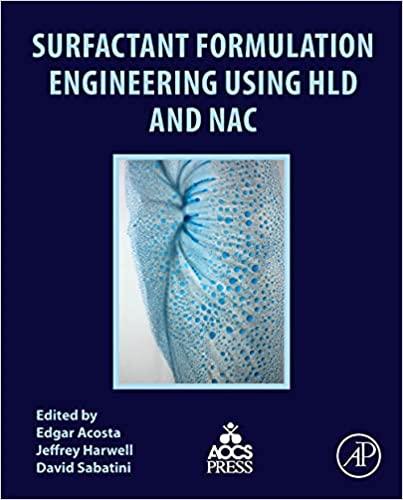Question
overall equation is 3H2 + CO = CH4 + H2O We are given the following LHHW-type mechanism: 1. CO + 2S C.S + O.S 2.
overall equation is 3H2 + CO = CH4 + H2O
We are given the following LHHW-type mechanism:
1. CO + 2S C.S + O.S
2. H2 + 2S 2H.S
3. C.S + 3H.S CH3.S + 3S (rate-determining step)
4. CH3.S + H.S CH4 + 2S
5. 2H.S + O.S H2O + 3S
Solution given by expert
Now, we can write the rate expressions for each elementary step:
1. k1: CO + 2S C.S + O.S r1 = k1[CO][S]^2 - k1_reverse[_C][_O]
2. k2: H2 + 2S 2H.S r2 = k2[H2][S]^2 - k2_reverse[_HS]^2
3.k3: C.S + 3H.S CH3.S + 3S (rate-determining step) r3 = k3[_C][_HS]^3
MY QUESTION IS WHY STEPS 4 AND 5 FROM MECHANISM NOT USED DURING THE DERIVATION OF RATE EPRESSION FOR THE DISAPPEARANCE OF CO if step 3 is the rate determining step. You can write your answer using a pen or post the answer in form of a pic
Step by Step Solution
There are 3 Steps involved in it
Step: 1

Get Instant Access to Expert-Tailored Solutions
See step-by-step solutions with expert insights and AI powered tools for academic success
Step: 2

Step: 3

Ace Your Homework with AI
Get the answers you need in no time with our AI-driven, step-by-step assistance
Get Started


